Like most of my peers, I don’t plan on sticking around if SHTF. As much as I love my home, I plan on getting out of dodge as quickly as possible. To make this happen, I have:
- Bug Out Bags packed and ready to go (see my BOB list)
- An emergency communication plan so I can quickly get my family together.
- Practiced a step-by-step bugging out plan with my family.
- A reliable bug out vehicle
Let’s Be Rational!
It should be obvious, but disaster prepping is never the same for two people. We live in different areas, face different threats, have different gear needs, and so forth…
Instead of going berserk trying to choose one “ultimate” bug out vehicle for all SHTF disaster situations, consider the following:
- Look at the worst-case scenarios you think are worth your time and effort to plan for.
- Consider how these situations will affect your mobility.
- Will roads be passable?
- Will fuel be available?
- What security situations will you need to plan for?
- Then, look at the MOST LIKELY disaster scenarios. Consider how these will affect your mobility.
- Find a bug-out vehicle that suits your worst-case and most likely disaster scenarios.
Let’s repeat that because it is crucial:
Your bug out vehicle should suit both your worst-case and most-likely disaster scenarios!
Bug Out Vehicle Considerations
I’ve narrowed the parameters to a few key considerations to make choosing a bug out vehicle easier. Look at these and see how they suit your worst-case and most likely disaster scenarios.
Space:
Is the Bug Out Vehicle big enough to carry all your team members? Is it big enough to hold all of your gear? Can the vehicle be used as a shelter?
Fuel Requirements:
Does the vehicle require fuel? What kind and how much?
Speed:
Will the bug out vehicle be able to get you out of a dangerous situation quickly?
Terrain:
Can the bug out vehicle handle rugged terrain such as broken glass on streets, snow and ice, flooding, and backroads?
Ease of Repair:
What are likely repair issues? Do you know how to make these repairs? Are spare parts readily available?
Imperviousness to Damage and Safety:
Will the vehicle be easily damaged by physical threats such as bullets, looting, or the elements? Will the car be able to protect you from these threats as well? Is the vehicle armored?
Cost:
Is the bug out vehicle within your budget? Will buying the vehicle detract from other parts of your disaster prepping budget?
Accessibility and Practicality:
Can you keep the bug out vehicle somewhere close by? Can you use the car regularly?
The Top 6 Bug Out Vehicle Choices and their Pros/Cons
Many more vehicles could be used for bugging out, and there are many different kinds of cars, SUVs, trucks, etc.
I’ve chosen to focus on the main categories of vehicles because they share the same pros/cons. Hopefully, this will help you make a decision suitable to your needs.
1. Car
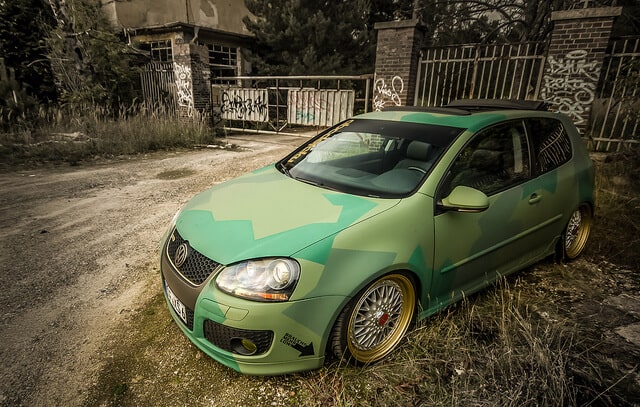
Pros:
- You probably already have one, and it is likely to be nearby when a disaster strikes
- Discreet
- Can be used as a shelter
- Can carry a decent amount of gear
- Depending on the model, spare parts might be easy to find
Cons:
- Probably not 4WD; can’t handle challenging terrain
- Easily damaged by terrain or external threats
- Could be affected by EMP
- Requires gasoline, which might not be available
- Must know how to make repairs
2. Truck or SUV
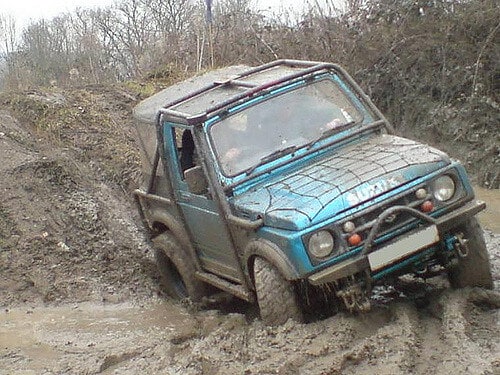
Pros:
- Handles tough terrain
- Protects occupants
- Can be armored
- Can be used on a regular basis
- Holds a lot of gear
- Can be used as a shelter
Cons:
- Has high fuel requirements
- Might make you stand out and become a target for looters
- Must know how to make repairs; spare parts might not be available
- A good setup will cost a lot!
- Could be affected by EMP
3. Campers/RV/Vans
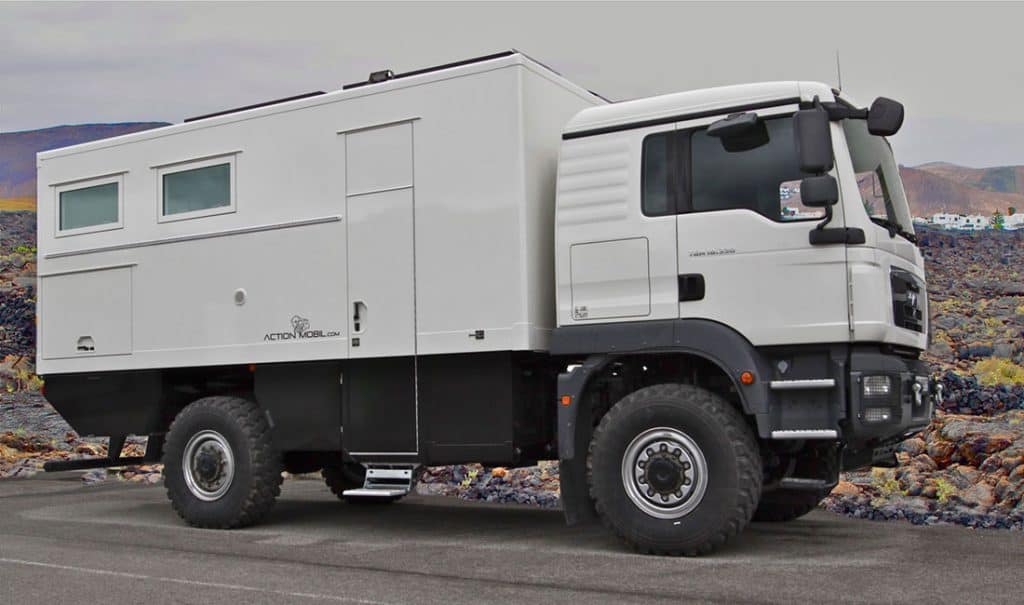
Pros:
- Make a great shelter, including for long-term survival
- Many are already equipped with features like solar panels, bathrooms, and kitchens
- Vast amounts of space for people and gear
- Can be armored and equipped with protection elements such as gun turrets
- Suitable for large groups (5+)
- Rugged, off-road campers are available
Cons:
- Very high fuel consumption
- Very conspicuous – sticks out like a sore thumb
- Many models don’t handle backroads very well
- Hard to maneuver; difficult or impossible to turn around on narrow roads
- Much slower speed than an SUV or car
- Must have a place to park it
- Isn’t used on a regular basis, so you probably won’t be driving it if a disaster hits while you are away from home
- Very expensive
- Could be affected by EMP
*See these Rugged, Off-Grid Campers! They will have you drooling.
4. Motorcycle
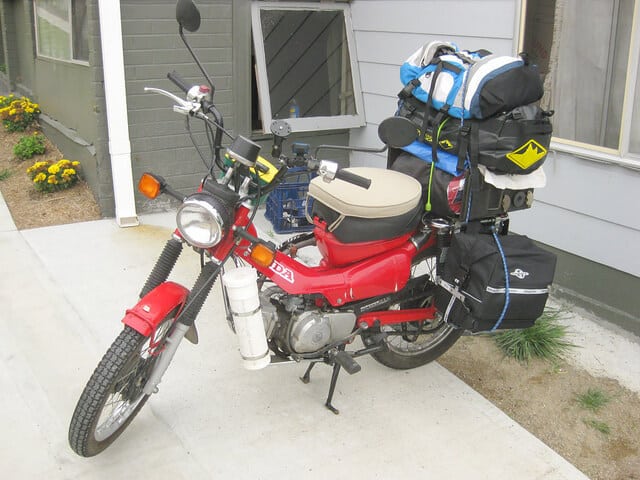
Pros:
- Very fast
- Can handle many types of terrain and obstacles, including navigating through rubble, roadblocks, and backroads
- Low fuel consumption requirements
- Easy to hide at base camp
- More likely to be EMP-proof
- Relatively easy and fast to make repairs
Cons:
- Aren’t able to carry much gear unless you use a trailer, but the trailer will negatively affect your speed and which terrain you can handle
- No protection from the weather or external threats like projectiles
- Not suitable for snowy or icy conditions
- Can’t be used as a shelter
- Only suitable for 1-2 people
- You probably don’t use it every day, so it might not be nearby when disaster strikes
- Unless you already enjoy riding a motorcycle, it means a significant additional expense
5. Bike
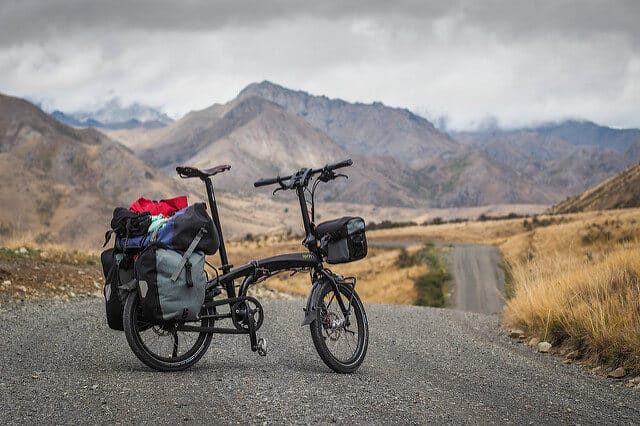
Pros:
- Requires no fuel
- Can get around roadblocks and navigate through traffic jams
- Could be used on small trails which are inaccessible to larger vehicles
- Impervious to EMP
- Easy to hide at base camp
- Can easily and quickly make repairs
- Very affordable
Cons:
- Manual labor to go anywhere – which means using much-needed calories
- Must be in good physical condition to use; injury would immobilize you
- Slow speed
- No protection from the weather or external threats like projectiles
- Only suitable for 1-2 people (as with tandem bikes or child bike seats)
- Saddlebags only able to hold limited amounts of gear
- Can’t be used as a shelter
- Tires easily pop on broken glass and fire
6. Boat
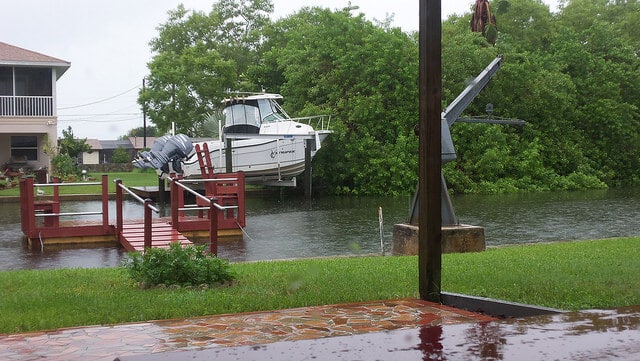
Pros:
- Only option suitable for severe flooding
- Can hold lots of gear
- Can be rigged to serve as a shelter
- Good option if you already live near a river or waterway
- Can run on fuel or with paddles
- With motor, a boat is very fast
Cons:
- Require specialized knowledge to operate, maintain, and repair
- Could be very difficult to repair in disaster situations
- Will need to waterproof all gear
- Inflatable boats are easily damaged
- Boats that are more impervious to damage are costly
- Unless you live very close to where the boat is docked, it won’t be easily accessible
You Always Need a Plan B!
When it comes to bugging out and disaster preparation, you always need a Plan B (and ideally a Plan C, D, etc.). This applies to your Bug Out Vehicle as well.
For example:
- Plan A: You use your 4WD SUV as your bug out vehicle because you already use it as your everyday vehicle (i.e., no additional costs to you); it meets your space requirements and can handle most terrain.
- Plan B: You realize that the SUV might be unable to get around roadblocks or traffic jams. So, you buy mountain bikes for each family member and equip them with saddlebags. When SHTF, you quickly mount those bikes on your SUV’s rack. You leave your SUV and switch to the bike when facing an obstacle.
- Plan C: Your SUV could be rendered useless by EMP. In this case, you evacuate on the mountain bikes.
- Plan D: Your SUV or bike is stolen. You set off on foot to your bug out location.
Prepare Your Bug Out Vehicle
But let’s take things a step further. Once you’ve chosen your Bug Out Vehicle, it is time to prepare it for bugging out.
Honestly, prepping your vehicle for bugging out doesn’t take much time. Many items on this Bug Out Vehicle Checklist should be in your vehicle anyway.
Doomsday may never happen, but breakdowns inevitably will!
But if something terrible occurs, you want to ensure your vehicle is ready to go.
Numerous disasters have taught us that the key to survival is fleeing early.
Each minute you save, beating the crowds, roadblocks, and looters drastically increases your chances of getting out unscathed.
Guidelines for Packing
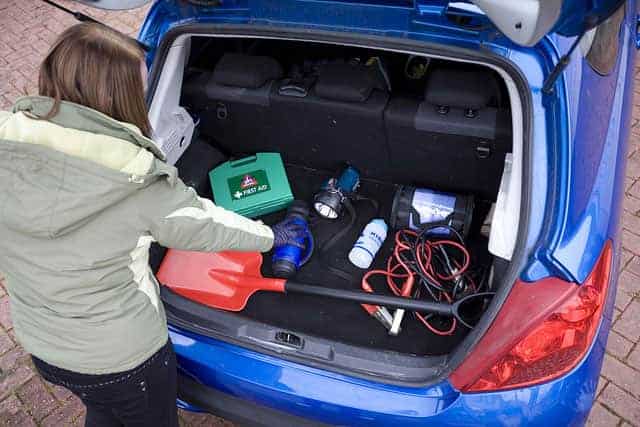
Guideline 1. You Need More than Your Bug Out Bag
It is highly recommended that you keep one Bug Out Bag at home and another in your vehicle. The reasoning is that disaster could strike while you aren’t at home.
A lot of people also keep BOBs at work too.
But just because you’ve got a BOB in your vehicle doesn’t mean your vehicle is “ready.”
The real benefit of bugging out by vehicle is that you can carry tons more gear. Why limit yourself to what’s in your BOB when you can load more?
So pack as much survival gear in your vehicle as is reasonable!
Guideline 2. Don’t Touch Your Bug Out Bag Items
Consider your Bug Out Bag items separate from your Bug Out Vehicle items. You should only use your BOB items if you abandon your vehicle and have to set off on foot.
Why? Consider this scenario:
A major terrorist attack has just occurred, and you flee by car. Your BOB is on the seat next to you. You’ve got 50 gallons of water in the car, but it is in the trunk and in large jugs. So, you decide to drink the bottled water from your BOB. “I’ll refill them later,” you tell yourself.
But then you notice an overturned car in front of you. You are forced to stop. Seconds later, it becomes apparent that the roadblock was put there by a gang of masked hoodlums quickly approaching your vehicle…
You grab your BOB, abandon the vehicle, and set off on foot through your Route B.
The problem is that your Bug Out Bag now lacks water. If only you’d drunk the water in your trunk instead of depleting your limited BOB supplies!
Guideline 3. You’ll Have Some Duplicate Items
You will end up with some duplicates because you are treating your BOB items as separate from your vehicle items.
For example, I’ve got a survival knife in my glove box and one in my Bug Out Bag. I’ve also got duplicates of survival food and water – there’s just tons more of it in my trunk than in my BOB.
Not everyone can afford duplicates to keep in their BOV and BOB. Since you should keep a BOB at home and in your car, and you need additional items for your vehicle, you can end up with triple the number of some things.
When budget is an issue, you can remove items from your BOB to use – just put them back immediately.
Better yet, focus on everyday carry survival items so you always have survival gear on you.
Bug Out Vehicle Checklist
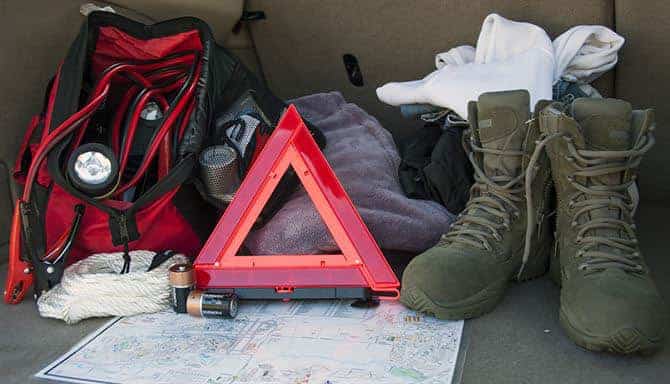
This Bug Out Vehicle checklist is for people fleeing in a car, truck, SUV, or other “traditional” vehicle. At the end, you’ll also see some items for alternative Bug Out Vehicles.
You might not need everything on the checklist, but start thinking about Worst-Case Scenarios, such as if your BOV got a flat tire or ran out of gas.
These types of thought processes are what help us get prepared!
Note this checklist is available as part of our checklist bundle.
Vehicle Emergency Items (with Amazon Links)
- Mechanic tool kit
- Basic spare parts
- Fuses
- Spare bulbs
- Spare windshield wipers
- Spark plug and socket
- Spare tire
- Fuel canister – read about the shelf life of gas in a can
- Siphon and pump – Read about how to siphon gas from a car
- Tire chains
- Tire repair kit
- Jack
- Tire gauge
- Air compressor
- Jumpstarter
- Ice scraper and snow brush
- Transmission fluid
- Washer fluid
- Oil
- Coolant
- Antifreeze
- Shovel
- Salt or kitty litter
- Spare keys
- Rope and bungee cord
- Tow straps
- Small broom and dustpan (for cleaning up broken glass)
- Fire extinguisher
- Duct tape
- RTV sealant
- Heavy gloves
- Roof rack
- Vehicle cover (preferably camouflaged)
*If you are going to transport extra fuel, the safest way is on your roof rack or a rack on the back of your vehicle. Never leave extra fuel inside your vehicle.
Signaling and Communication Gear
- Phone charger (see solar phone charger reviews)
- Flares
- Reflective vest
- Emergency warning triangles
- Emergency radio
Shelter, Warmth, and Clothing Items
- Lighter and matches
- Dry tinder
- Tarp or tent
- Rain gear
- Winter clothing
- Change of clothes and extra socks
- Boots
- Blankets and/or sleeping bags
Navigation Items
- GPS
- Paper maps
- Compass
Documents
- License
- Registration
- Vehicle repair manual
- Contact list with phone numbers
- Firearm CWP permit
Water and Food
- Bottled water – the more, the better!
- Water filter
- Non-perishable food – see emergency foods for your vehicle
- Mess kit
- Cooking pot
- Emergency stove
Survival and Personal Protection Items
- Knife
- Firearm
- Pepper spray
- Flashlight
- Headlamp
- Bolt cutters (really useful when trying to get your vehicle through chain blockades)
- Crowbar
- 12-volt emergency power supply
- Seatbelt cutter + glass breaker
- Your Bug Out Bag
Personal Hygiene Items
- Toilet paper
- Insect repellent
- Sunblock
- Soap
- Baby wipes
- Face mask
- Medications
- Diapers (if applicable)
- Female hygiene items
- Car first aid kit
Items for Alternative Vehicles
- Bike or motorcycle helmet
- Life jackets
- Paddles
- Life raft
- Dry bags
Bug Out Vehicle To-Do Checklist
Yes, there is more! You must ensure your Bug Out Vehicle is always ready to go.
- Keep tank at least half full at all times
- Service your vehicle regularly
- Learn how to do vehicle maintenance
- Rotate the food in your vehicle
- Rotate the water too. Water bottles leak after 6-12 months, especially in a hot car trunk.
Is there anything I missed on the BOV checklist? Let me know!
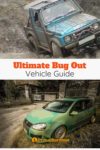
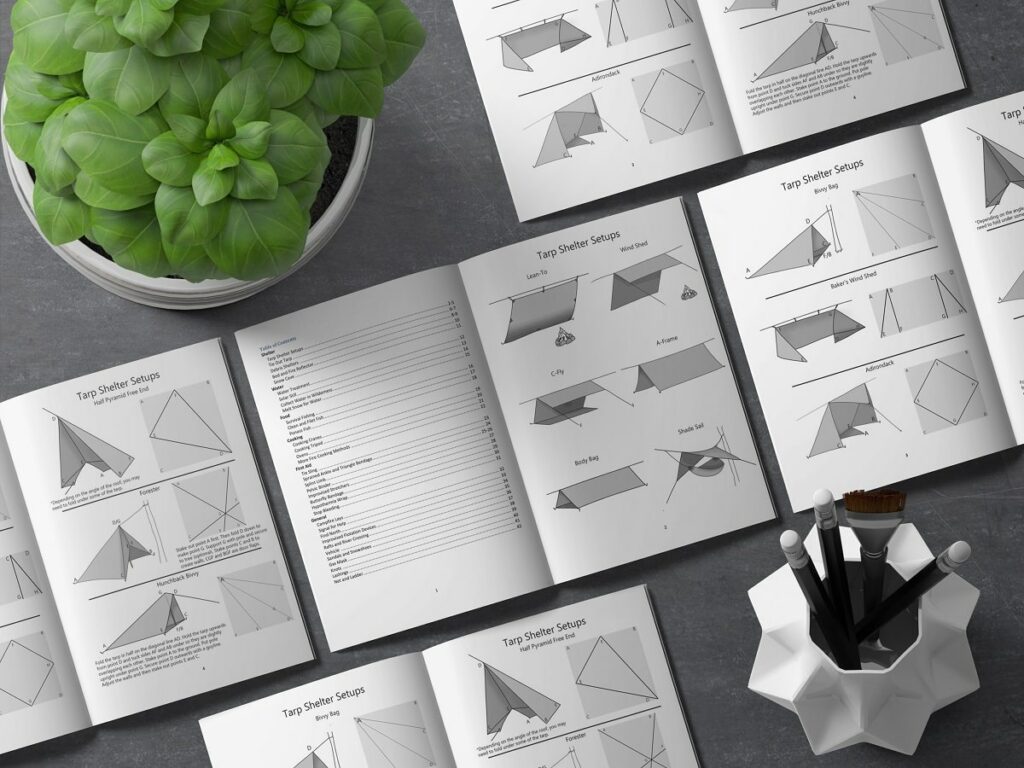

Why does everyone assume that you’ll need an off road 4×4 vehicle? Your choice of vehicles should depend on where you live; where you’re going to, and what you can afford.
Your vehicle should not BLATANTLY look like a bug out vehicle. It should also get great gas mileage.
Four Wheelers and Three Wheelers are better used than Heavy Motorcycles. You can tow one behind your vehicle, some you can put in the rear of a pick up truck, it is extra weight, but you can go through the woods,highways,roads and other locations, hunt, scrounge for food and supplies and they don’t take much fuel to run.
People who insist on bugging out need to consider something: What’ll happen to the location you’re leaving once you leave?
I haven a small rather inconspicuous white van which I use for travelling all over Europe (I’ve been living in it for stretches of over 6 months). It always has some non perishable food and water in it, and a can with extra fuel. My bug-out backpack has its place near the passenger seat and on the chainring of my carkeys I have a Resqme seatbelt cutter and window smashing thingy. That should be able to get me through quite a bit… I have even done some light off-road driving with the van and it behaves wonderfully.
One of the best things about it is it’s inconspicuousness: When getting fuel, people often ask me if I want a bill for my company’s tax declaration (I don’t have a company), and I can easily park in urban areas because folks assume that I am doing plumbing or electricity or whatnot. 🙂
Add on
One or two good size farmer/gardener type hand salve. Bag Balm type etc or a good beeswax homemade.
Many people will be using their hands way more than usual, dirt and cold dries skin fast and chapped cracked hands are painful and an infection risk.
Agree! I have something like this in my EDC: an awesome balm/salve made out of beeswax. It is awesome from cracked hands or lips, blisters, and even as a burn salve.
I didn’t see any mention of children here, I often have my 2 year old grandson with me. The emergency situation I’m most prepared for is Cascadia as I live on the central Oregon coast. I keep an umbrella stroller in my car at all times so I can haul the little one with me. Carrying a kid would seriously slow me down if we had to run for it (earthquakes tend to make roads impassable). That’s along with my bob, water etc.
Good note. To avoid going down a rabbit hole, we usually try to focus on the key points. There’s a big article on prepping with kids here – https://www.primalsurvivor.net/disaster-prepping-children/. I also have a two year old and keep a backpack-type carrier in the trunk of the car as well as trekking poles for stability while using it. I debated having a stroller in there too but I like the fact that I can go off-road with the carrier — though the stroller is certainly easier on my back for long distances.
Every single transport vehicle that the article reviewed, except a bicycle, which can’t carry much, can be affected by an EMP. EMPs can be caused by terrorists, bad political actors, antagonists, and solar storms. A large EMP (such as one created by severe Solar activity) will wipe out many electrical systems, which our societies have evolved to rely on. Economies will be devastated. The Amish will be better off than the rest of us, except that they have relied upon us “English” to transport them locally and distantly. Primal Survivor should do an article about EMPs and how devastating they can be. The Carrington Event in late August and early September of 1859 was identified as a Coronal Mass Ejection, but back then we were not as reliant on electricity as we are now (computers, phones, radios, televisions, GPS, lighting sources, electrical appliances, and transportation devices (Planes, vehicles, trains, boats, and many other things). I’m not sure how much it would affect independent solar panel systems but transformers and other electrical system components would be impacted. The Van Allen belts provide some protection but they can be overwhelmed.
Hand crank emergency radio for the adults, battery operated dvd players for the kids.
I’ve never heard of a Harley that could be used to seriously ride “off road”.
You should have an older vehicle(one that DOES NOT have any electronics in it). In case of an EMP attack.
Your personal hygiene list did not mention any female hygiene
items.
Good note about the female hygiene. It will be updated! We have this post dealing with ladies’ needs during disasters: https://www.primalsurvivor.net/feminine-hygiene-emergencies/
There are many items I carry but my most prize possession is “OnStar”
There isn’t really a big out option in the South of the United Kingdom (UK). My vehicle preps are all aimed at me getting home and hunkering down. I therefore have a 4 x 4 suv, stocked for 3 days travel (my commute is usually 45minutes) and an additional Bob in case I have to abandon my vehicle. Being ex military, I’m used to preparing for the worst, hoping for the best.
The question remains: where do you bug out TO?
Unless you are leaving some dangerous urban center for a relative’s farm or cabin, one who has their own supplies and welcomes you, just getting out of Dodge may be the classic, out of the frying pan into the fire.
With Metropolis burning behind you, and cars going bumper to bumper, it is like a hurricane evacuation. Disabled cars along the side of the road, people trying to walk and other unpalatable situations.
I live in the mountains and my neighbors are like-minded friends. We will just defend the ridge and live off the land after our supplies run out.
Way back in the seventies when there were such long lines to fill up and alternate days depending on your tag number people were going through urban neighborhoods at night and tapping an oil can spout that could close or open into vehicle gas tanks. They would get what fuel they could and keep coming back because the spout could just be turned back on and the tank drained again.
Desperate times require improvisation skills and this is a good example that could come in handy in a SHTF situation. not that we condone such behavior of course!
Oh, and about that siphon & pump… please realize that most cars have anti-siphon technology in place that will prevent you from siphoning fuel from a vehicle.
If there is truly a dire need to do so, and you have the manpower (at least two people, but three is much better) and tools (an awl or screwdriver, a rubber mallet, vinyl gloves, a drain pan or like container in addition to a gas container), you c-o-u-l-d punch two holes in a gas tank from under the vehicle, one hole up high to be the air hole and one hole down low to drain the fuel into the drain pan. When the drain pan is fairly full, have person #2 pour the fuel into your gas can while you’re plugging the lower hole in the gas tank. Repeat the draining/plugging/pouring process until your gas can is full or the gas tank is empty.
Of course, person #3 is your look-out/security.
Thanks for the important clarification.
Would a punch through the tank cause an explosion?
If you’re going to have anything of value, including a BOB, visible in your vehicle, consider storing it in an empty dog food (or goat chow or horse food, etc) bag. Having a bag of bunny chow in the backseat of your vehicle isn’t nearly as attractive as a well-stocked BOB. 😉
That is an excellent idea. Some very creative outside the box thinking.
Great ideas! I use cat litter containers to store my bob and food.
Excellent kit there Broadwing. Only issue I see with BOB on back seat is the risk of getting it stolen if it is visible from the outside. It may be worth hiding the essential stuff in the glove compartment – we have a post on that here.
I have an extra BOB in the car, and a Get Home Bag with water and extra food, just in case. The GHB sits right where I can grab it if need be. The BOB is in the trunk along with a emergency tent. Many items are duplicate but it will be worth it. Additionally I have an extra US Army sustainment bag with food and condiments to supliment my two bags. Overall I have about five days worth of food and water for two. Instead of filled water bottles in the back I have 1 liter pre packed and sealed packages of water with a five year shelf life. No leakage with these so far. Overall my car preps are still a work in progress. I do worry about being able to get into or have access to the trunk under certain conditions. I might move the extra BOB to the back seat for better access since the front passenger seat might be occupied if we can’t take my wife’s car also.
Water in vehicle will freeze in winter where I live
I recommend to add a chainsaw (to cut fallen trees
I have a for wheel drive pickup and a all wheel drive toyota highlander and a 7 X 14 motorcycle trailer. Which vehicle would be best and should I pull the trailer to put supplies in, and should I bring the motorcycle (Harley-Davidson Ultra Classic limited) or leave it behind.
Hi Gary – totally depends on the situation. If you have the time and can plan ahead\travel back roads etc then bring as much as you can. If you need to get out of dodge quick then the Harley and a BOB might be your best option.
Think about the most likely scenarios in your area and plan the best response.
I want to speak to the use of a Motorcycle in a Bug out situation.. It is a very bad choice.
1.. Motorcycle riding itself has increased risks for injury in any circumstance. Get injured in a Grid Down situation and you may well not leave the spot you went down.
2. The inarguable increased concentration requirements to remain upright decrease the ability to perceive long range threats in advance.. Please do not argue this point.. Motorcycles worked as Military Courier Vehicles in the past but due to the nature of current threats and no “Front Lines” they no longer work in high risk environments. They were tried and abandoned again by the US Military most recently in the 70s. There will be “No front Lines” in a grid down situation.
3. You are low hanging fruit..
I agree with your arguments, but that assumes we are talking about a TEOTWAKI situation. Not every disaster is doomsday and, in some cases, a motorcycle makes more sense than a car — especially when it can go on smaller roads or around obstacles. A motorcycle is also a lot easier to roll off to the side of the road and camouflage when having to camp out for a night. And, as someone who has traveled a lot, there are plenty of people in the world who only have motorcycles and don’t have a car at all. I guess the main point I want to make is that there is no one perfect BOV. Everyone’s really got to look at their unique situation and which disasters they are prepping for.
A good list of all the stuff you “should” have. “BUT”—-how about a minimum list of what is absolutely necessary. Have you calculated the weight/volume of you ideal list? Would definitely not fit in a Rav4 SUV ( and have room for passengers) —-unless you pull a cargo trailer!
As always you must prepare for your own individual situation. This is a general list – not everything is required – decide what you need for your own needs and priorities and go from there.